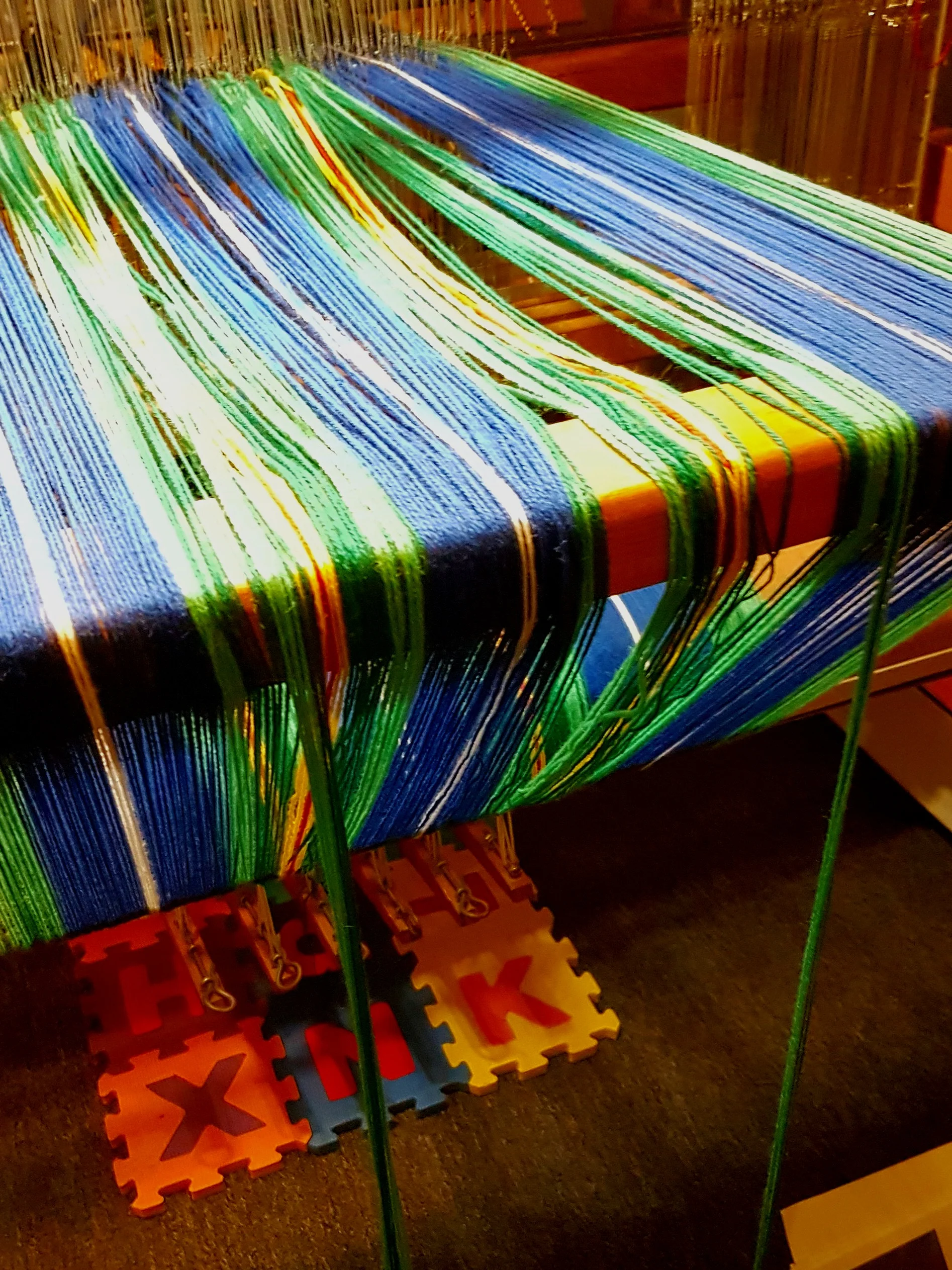Dressing the Loom Pt 2
Last blog post I explained how dressing the loom should work. It seems a long process, but pretty straight forward: wind the warp, take the warp to the loom, wind, thread, tie and weave. It’s never that easy for me. Have you seen those videos showing 1 parent trying to dress twin toddlers? That’s me warping my floor loom. The real lessons to be learned in this post are that there is no right way, just easier ways! Mistakes can be fixed and weaving requires persistence, patience and creativity.
mini warp!
I’ll be honest with you though: my warping issues are all my own fault! I was getting pretty good at it, then I decided I should try to warp front to back. The books say you should try both ways (back to front and front to back) and find what works best for you. So I did, and did everything wrong!
My first mistake was winding a warp for a tartan starting after 10 pm. Tartans are particular…the colour order and the number of each colour are important. And the Nova Scotian Tartan has 6 colours. With all the repeats of blocks it is really easy to get confused or miscount. I did both! Fortunately these are not very serious mistakes, I just wound a few extra ends to add in before winding.
Winding didn’t take too long so I decided to go ahead and start putting the warp on my loom…and try warping front to back. (I usually wind back to front and am pretty good at that!) I got out my book (Learning to Weave by Deborah Chandler) and was very determined to follow it step by step. Except, after sleying the reed I realized it was really uncomfortable trying to work from behind the loom and there was no way I was going to be able to thread all the heddles from back there. So I wound the warp onto my back beam. It was a very smooth winding onto the back beam. I might keep doing this for narrow warps. Then I went to bed.
When I came back to my loom I had to decide how best to proceed. Since I planned to warp front to back my cross was gone. My threads were all in the right order because they were in the reed, but now they needed to come out of the reed to go through the heddles and back in the reed. It’s much easier to see to thread the heddles if the reed is removed and I can sit closer to the heddles. This time I needed to pull a few threads out of the heddle at a time and thread the heddles. And it was during this process I made and discovered a few more mistakes.
In the heddles
2 Threads make a difference! Also, extra threads in the reed makes wavy lines.
First, I was threading 1,2,3,4. Very simple. Can’t possibly mess that up, right? So I didn’t do any of the things I usually do to prevent and catch errors. Big mistake. After threading all the heddles and then going back to check I found multiple mistakes. All of which would have been caught had I not gotten over confident. Second, I found all the mistakes I made in winding the warp! (note to self: don’t wind a complex warp late at night, ever) You’ll see I’ve got several bunches of warp hanging off the back of the loom and weighted as well as threads crossed in the back so they are in the right order on the front. Finally, I just wanted to get weaving so when I found I had threaded 1,2,1,2,3,4, I just unthreaded and tossed the first 1,2 off the back. 2 threads make a difference! It will be fine for a sample, but I’ll need to add those 2 threads back and rethread the heddles for the next scarf.
Tying on went well…except I forgot to check my reed. (Did I say I just wanted to get weaving?) It’s amazing the difference missing a dent makes in weaving. In a tartan that 45 degree angle is important and having an extra thread in the reed or missing a dent makes a noticeable difference.
So, this is a sample piece! I’ve worked out the kinks, tried a couple different ways of changing colours and learned a lot. The next piece will be a 72” official Nova Scotian tartan scarf. On a side note, did you know that one must be licensed to produce and sell the Nova Scotian Tartan? I’m currently in the process of getting a license so I will have scarves and tea towels for sale soon!






